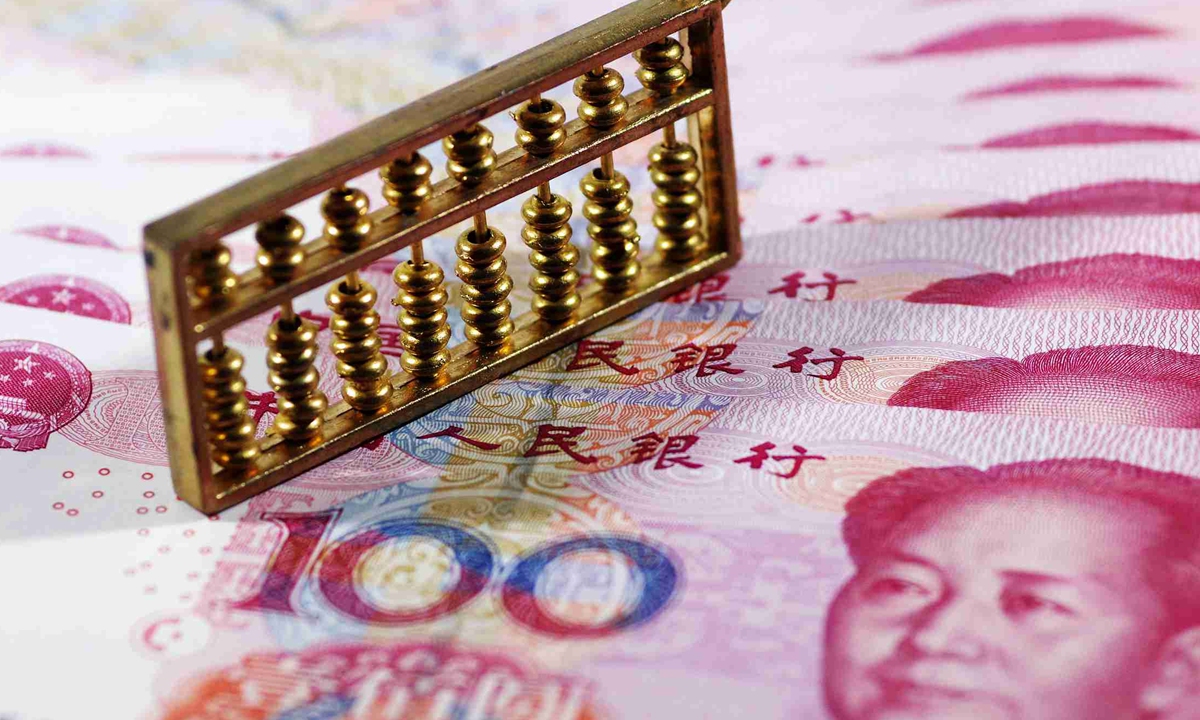Russian officials push local currency settlement to accelerate yuan’s internationalization, counter dollar hegemony

Chinese yuan Photo:VCG
Russian officials have been actively pushing forward settlement in local currencies - the Russian ruble and the yuan - since last year, driven by the vast amount of bilateral trade, which is expected to exceed the benchmark of $200 billion this year ahead of the target, as well as the strategic need to cut dependence on the US dollar amid Washington's unilateral sanctions that abuse the dollar's dominant position in global trade.
The share of settlements in national currencies between Russia and China is set to grow in the near term, and this will help avoid the risks of US dollar hegemony and promote the internationalization of the yuan, experts said.
Bilateral local currency settlement climbed to nearly two-thirds of the total in 2022 from about 25 percent in 2021, Russian Prime Minister Mikhail Mishustin said when addressing a Russian-Chinese business forum held in Shanghai on Tuesday, Sputnik News reported.
The Bank of Russia already invests in the yuan, and in bilateral trade, the yuan and ruble account for more than 70 percent of payments, President and Chairman of Russia's VTB Bank Andrey Kostin said on Tuesday during the forum, according to a Tass report.
"China is the world's second-largest economy today, and it will become the largest in the near future. There is every indication that the yuan in particular may replace the US dollar as the main global reserve and accounting currency in the coming decade," Kostin said.
There are countries that are preparing to use the yuan when settling transactions with Russia, but this needs to be approved by China, and Russia is studying this, Kostin noted.
In April, Bangladesh reportedly approved a payment of $318 million to a Russian nuclear power developer using the yuan.
Zhang Monan, deputy director of the Institute of American and European Studies, China Center for International Economic Exchanges, told the Global Times on Wednesday that more local currencies are expected to be used in future bilateral settlements.
"The yuan will gain momentum in Russia in more scenarios given the solid demand, stemming from both internal trade-related needs and strategic considerations to fend off geopolitical risks," Zhang said.
The yuan has gradually become one of the most attractive foreign currencies in Russia in various fields since the outbreak of the Russia-Ukraine conflict last year.
According to a report from the Bank of Russia, the country's central bank, the share of the yuan/ruble pair trading on the Russian exchange reached a new high of 39 percent in March. During the same period, the share of the US dollar/ruble pair fell to 34 percent, the lowest in recent years, Tass reported.
The process for the currency to replace the US greenback's status in the global currency system is a long-term one, Zhang added.
The rise of local currency settlement between China and Russia comes amid a sweeping global wave of de-dollarization as many nations seek alternatives to the greenback to reduce dependence on the US.
"The attempt by China and Russia to expand local currency usage has set a template for other developing countries that are exploring ways of settling trade without the US dollar," Zhang said.
Brazil and Argentina, the two largest economies in South America, announced in January that they would launch a currency union, which will drive trade in the region and rely less on the US dollar.
The gains for the yuan are inseparable from China's economic power, as the world's second-largest economy offers great certainty and confidence amid global uncertainty and a complex environment, Zhou Maohua, an economist at Everbright Bank, told the Global Times.
The yuan's internationalization will accelerate and the currency will be adopted in more scenarios by more countries, and this has become an irreversible trend, Zhang noted.




